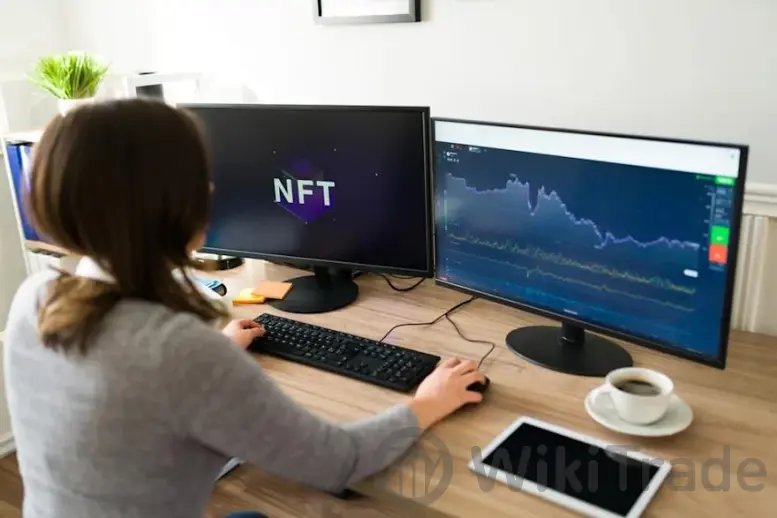Where can I sell NFT artwork?
Abstract: As more people become familiar with what NFTs are and where they may be found, it remains unclear how they function and where they originated. Although the procedure is straightforward, it does need knowledge of its execution.
The world of NFTs (Non-Fungible Tokens) is rapidly expanding, offering artists a new avenue to monetize their digital creations. This guide will walk you through the essentials of creating, listing, and selling NFT art, as well as strategies to boost your sales.

What is an NFT?
NFTs are unique digital assets that represent ownership of a specific item or content. They are bought, sold, and traded on blockchain platforms, unlike cryptocurrencies which are interchangeable. Each NFT has a distinct value and cannot be replaced by another.

How to Create and Sell NFT Art
Step 1: Develop a Concept
Choose the type of NFT you want to create, such as artwork, event tickets, or collectibles. Consider the utility and rarity of your NFT, as these factors can influence its value.
Step 2: Prepare Your Digital Artwork File
Ensure your artwork is in a suitable format for the NFT marketplace, which could be an image, photograph, GIF, or other digital formats.
Step 3: Choose Your Blockchain
Select a blockchain platform that fits your needs in terms of transaction fees, speed, and reach. Popular choices include Ethereum, Solana, Polygon, Tezos, and Binance Smart Chain.

Step 4: Choose Your Marketplace
There are numerous marketplaces to sell NFTs, each with its own features and user base. Some of the top marketplaces include OpenSea, Rarible, SuperRare, and Objkt.com.
Step 5: Set Up a Digital Wallet
To sell on NFT marketplaces, you'll need a digital wallet compatible with the blockchain you've chosen. Popular wallets include MetaMask, Math Wallet, AlphaWallet, Trust Wallet, and Coinbase Wallet.
Step 6: Mint Your NFTs
Before selling, you must mint your NFTs, which involves uploading your digital artwork to the blockchain. Most marketplaces provide a straightforward process for this.
Step 7: Choose the Price
Decide whether to sell your NFT at a fixed price or through an auction. Consider the rarity and demand for your artwork when setting your price.

Step 8: Create a Listing
Craft an engaging title and description for your NFT, highlighting its features and any additional benefits for the buyer.
Step 9: Check Your Offers
Regularly monitor your NFT listings for offers and bids. Be prepared to accept or reject these based on your pricing strategy.
Step 10: Accept an Offer
When you receive an offer, you can choose to accept it, negotiate, or continue waiting for a better offer.

10 Tips for Selling NFT Artwork
- Twitter Promotion: Use Twitter to share links to your NFT sales, as it allows for more direct promotion than other platforms.
- Instagram Presence: Maintain an active Instagram account to showcase your portfolio and artistic journey.
- Hashtags: Use relevant hashtags to increase visibility and connect with potential buyers and the NFT community.
- Share Your Process: Engage your audience by sharing your creative process and inspirations behind your work.
- Cautious Outreach: Avoid aggressively seeking out collectors; focus on building genuine relationships.
- Discord Forums: Join Discord communities to network with other artists and collectors, and share your work.
- Reddit Engagement: Participate in Reddit threads to showcase your work and learn from the community.
- Newsletters: Submit your work to NFT-focused newsletters to reach a wider audience.
- Collaborations: Collaborate with other artists or influencers to create unique NFTs that appeal to a broader audience.
- Stay True to Your Art: While the NFT market offers new opportunities, remain authentic to your artistic vision.
By following these steps and strategies, you can successfully navigate the NFT market and sell your digital artwork to a global audience.





Top News
 WikiTrade
WikiTrade WikiTrade
WikiTrade WikiTrade
WikiTrade WikiTrade
WikiTrade WikiTrade
WikiTrade WikiTrade
WikiTrade WikiTrade
WikiTrade WikiTrade
WikiTrade WikiTrade
WikiTrade WikiTrade
WikiTrade

